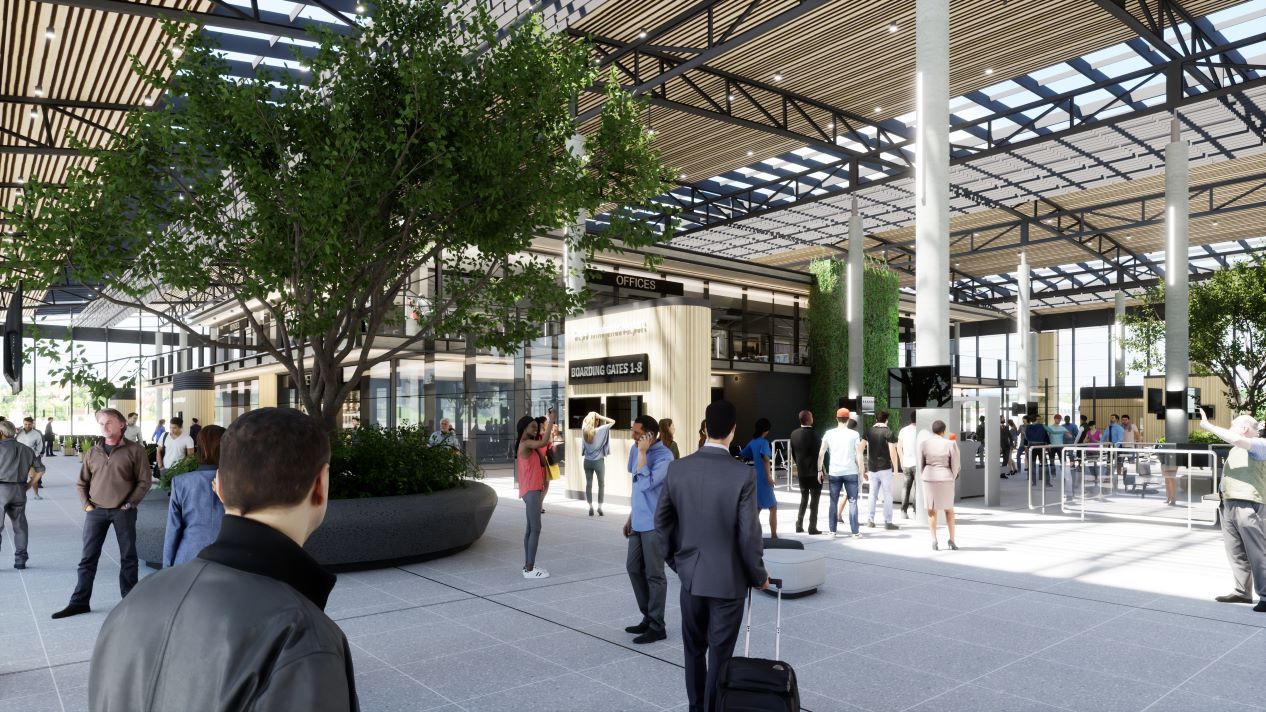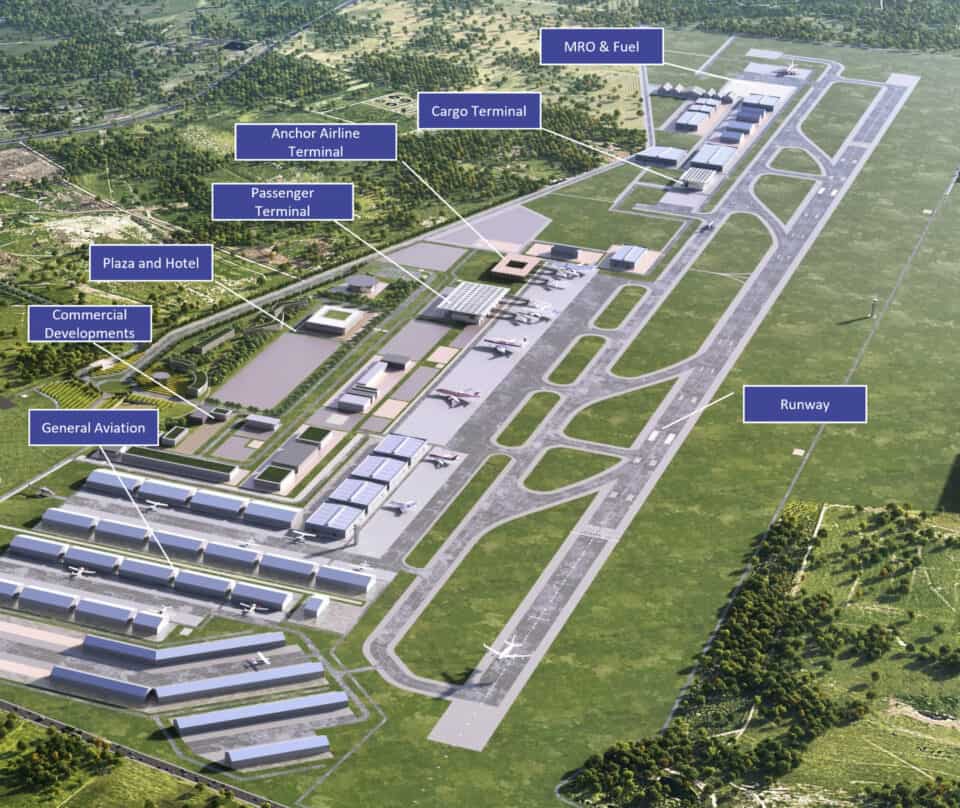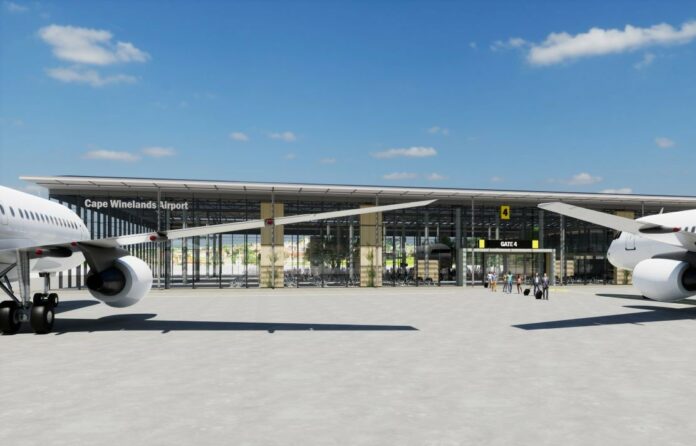The picturesque Cape Winelands region is set to soar to new heights with an estimated R7-billion airport expansion programme, marking a significant milestone in the area’s development and accessibility.
Cape Winelands Airport, established in 1943, is an integral part of the Northern District of Durbanville. As one of the oldest airfields in the region, it has primarily served the General Aviation community. The airport’s strategic location makes it a vital asset for the region, poised to contribute significantly to the local economy and the aviation industry.
The belief is that the holiday starts when arriving at the airport and not at your destination. The development plans include vineyards as part of the landscaping aesthetics to portray the regions wine culture, ensuring that when one arrives at the terminal precinct of Cape Winelands Airport, one will be surrounded by vineyards with open spaces that includes a plaza, a hotel, conference centre, a wine tasting experience, an outdoor amphitheater for events up to 5000 people, an aviation museum and plenty of at-grade parking, all situated in a “park” like environment. In the controlled airside area of the airport, a portion of the land will include a botanical garden with a diverse collection of indigenous fynbos, both within the country and globally.
“We are thrilled to introduce this our airport expansion to the Cape Winelands region”, said Deon Cloete, Managing Director of Cape Winelands Airport. “This facility represents a commitment to providing world-class transportation options, promoting tourism, and stimulating economic growth in our beautiful region.”
The airport will offer a range of contemporary amenities and services designed to enhance the travel experience. These include efficient check-in counters with advanced technology for swift processing, spacious and comfortable waiting lounges with ergonomic seating, and a diverse selection of high-quality dining establishments and boutique shopping outlets, ensuring that passengers have access to a wide array of food and retail options to suit their preferences and needs.

Cape Winelands Airport will serve as a crucial gateway to the Cape Winelands region, offering a range of domestic and international flight options and opening up new routes. The airport will effectively process 2,000,000 international tourists and 3,000,000 domestic travelers per annum by 2050, taking the overall annual passenger traffic to the region from 10 million to 20 million passengers. Beyond job creation, the airport is expected to have a far-reaching impact on the regional economy. Increased tourism and business opportunities will contribute to the growth of local businesses and industries, especially around the logistics clusters.
“Airports world-wide are known to have a positive impact on the socio-economic conditions of the regions which they serve. This airport will be no different,” said Deon Cloete, Managing Director of Cape Winelands Airport.
The airport aims to be self-sufficient and off the grid for water and electricity as far as possible. Through a commitment to sustainability and innovation, it will harness renewable energy sources, such as solar and chicken manure biogas power, to power its facilities and operations. This shift towards self-sufficiency will not only reduce the carbon footprint but will also ensure a reliable and uninterrupted energy supply, even in adverse conditions. The airport will implement state-of-the-art water recycling systems, able to conserve and purify water for various airport needs. Additionally, its waste management practices will prioritise recycling and composting, further reducing its environmental impact.
Over the past three years, the team has diligently engaged in meticulous planning and extensive consultation with stakeholders from the broader aviation industry. This collaborative effort underscores the commitment to delivering world-class services and facilities to passengers, airlines, and partners. By meticulously crafting a strategic vision through years of dedicated work, Cape Winelands Airport aims to enhance the travel experience, boost operational efficiency, and remain at the forefront of innovation in the aviation sector.
“The airport leaves the city, the city follows the airport, and the airport becomes the city.” – John D Kasarda, The Airport City Phenomenon

Facts and Figures
- Main Runway – 3500m can accommodate (Boeing A380).
- Code 4F Runway with a category 9 fire cover and a category 3 ILS.
- Secondary Runway – 700m, Code 1A, primarily focused on small planes in cross wind conditions.
- Estimated to have 25% of the passenger market into Cape Town by 2050 and grow to 5m passengers.
- Anticipated to introduce the first digital tower and control room in Africa.
- Buildings to include hangarage for aircraft storage, facilities for light manufacturing and industrial purposes, logistics and warehousing services, food processing facilities, spaces for educational and commercial office purposes, retail spaces, venues for events and conferences, hotel, a bulk aviation fuel farm, and a public filling station.
What is a closer alternate airport and what does it mean for Cape Town:
By law, every airline must register an ‘alternate destination airport’ at which it will land in the event that it is unable to land at its intended destination airport due to an emergency, poor weather conditions or the like.
In Cape Town, an international airline will generally identify one of the main airports in Johannesburg as its ‘alternate destination airport’. This means that with every flight, it must carry sufficient fuel to fly to the ‘alternate destination airport’ in the event that it might need too. With the existence of CWA, a much closer ‘alternate destination airport’ exists. Alternate airports are part of the flight planning process and are specified in the flight plan, allowing the crew to make informed decisions in the event of diversions or emergencies.
The result of CWA as an alternate destination is:
- Improved redundancy and less dependence on one airport
- Reduction in fuel uplift – 110,000,000 kg enabling additional cargo opportunities
- Annual reduction in fuel consumption (5% per flight) – 21,000,000 liters of fuel saved.
- Annual reduction in CO2 emissions – 54,000,000 kg less CO2 into the environment.
- Improved flight times for all tourists and residents in an emergency.
- Reduced costs and enhanced viability will lead to reduced airfares and cargo rates.
Additional Cargo Capacity
It is estimated, using Customs and Excise reported facts, on kilograms imported directly into Cape Town by air that through having a closer destination alternate airport in Cape Town this will increase the additional cargo capacity into the area significantly. Additional supply will have consequential reductions in air cargo prices.
Estimated Initial Capital investment
- R7-billion








